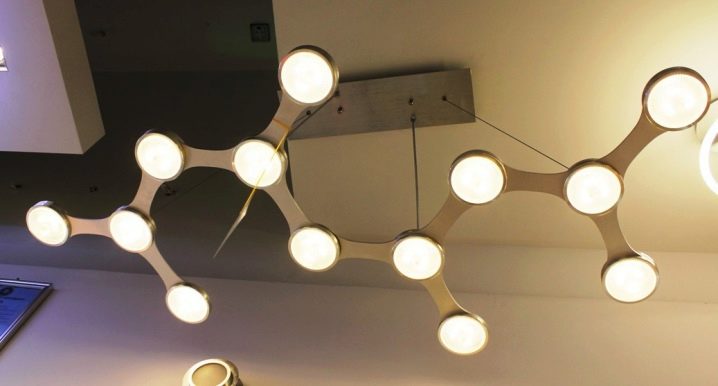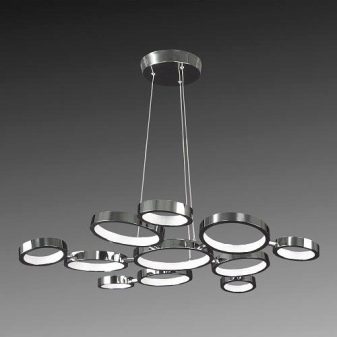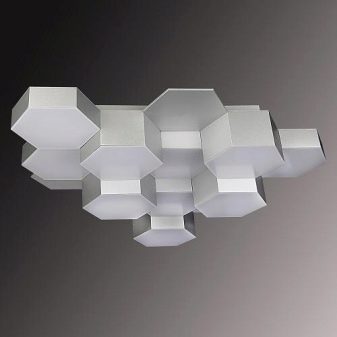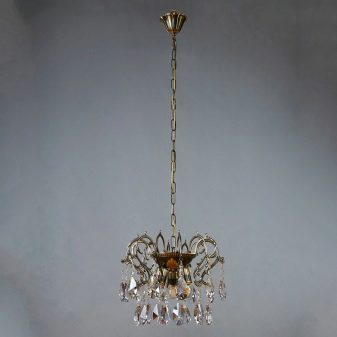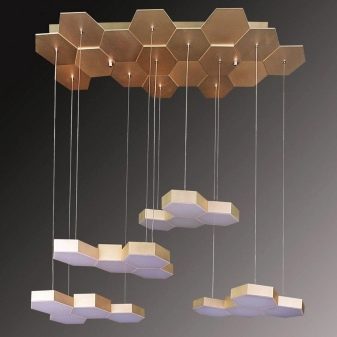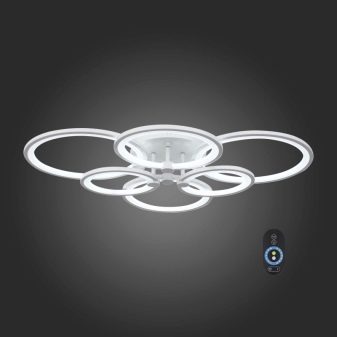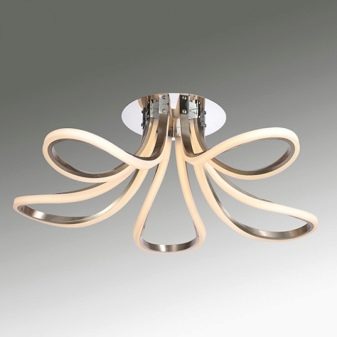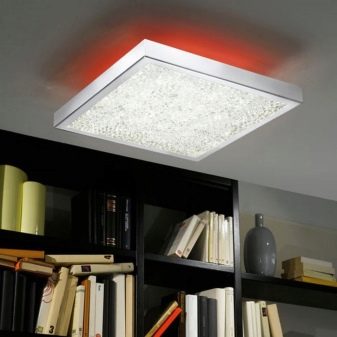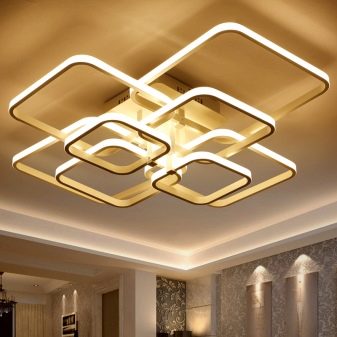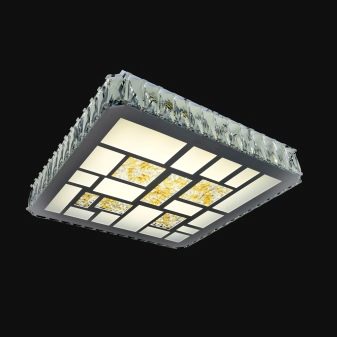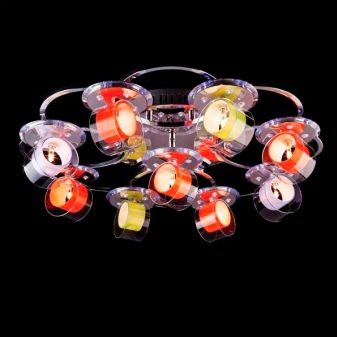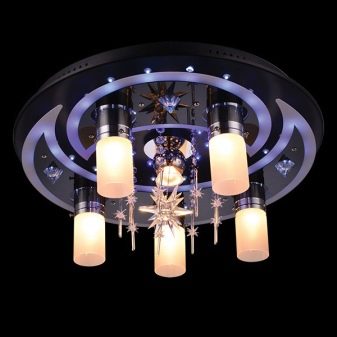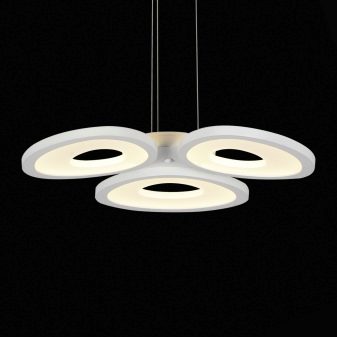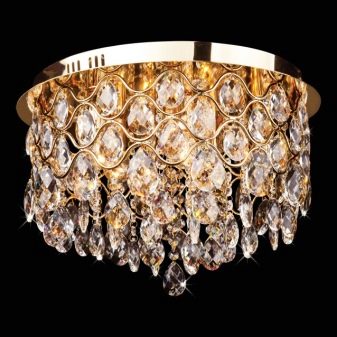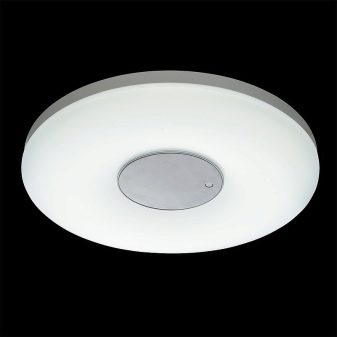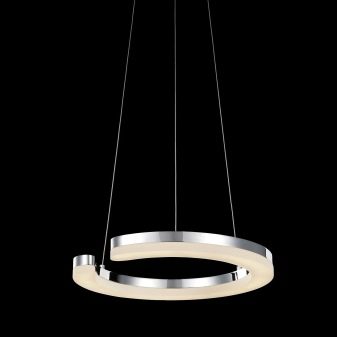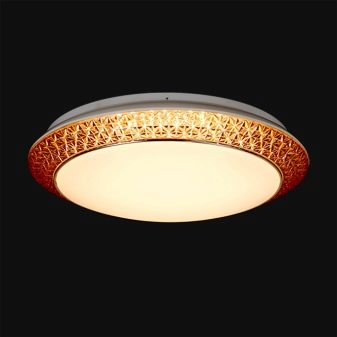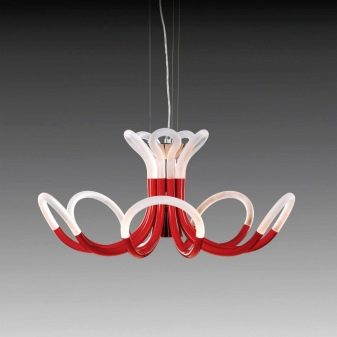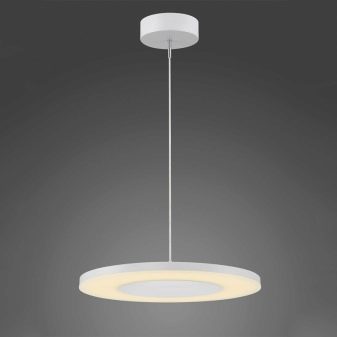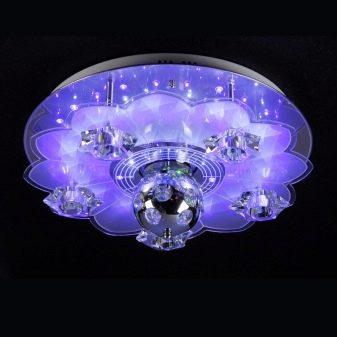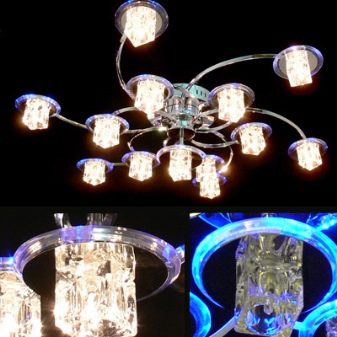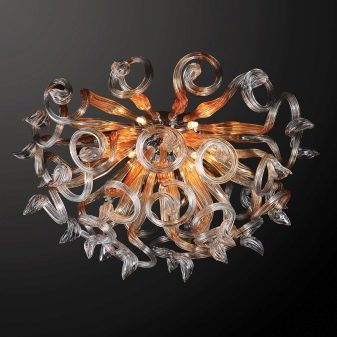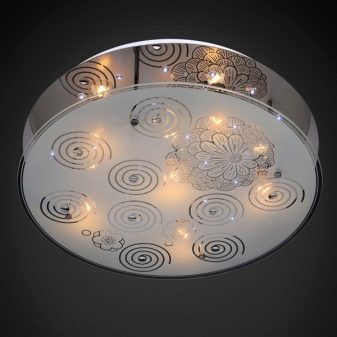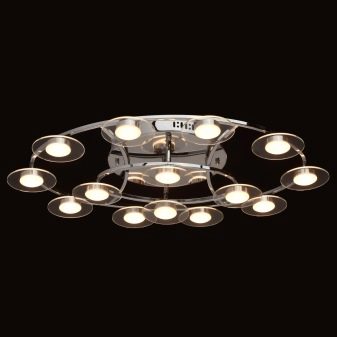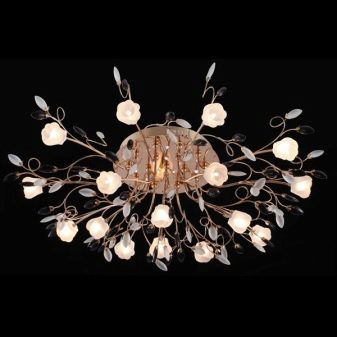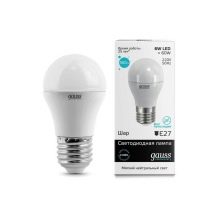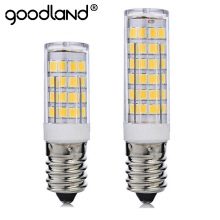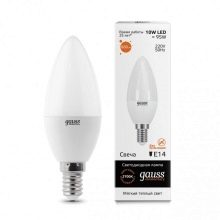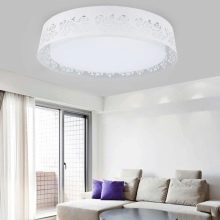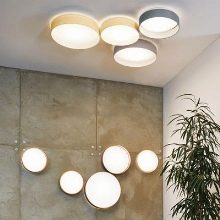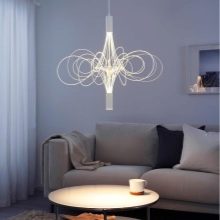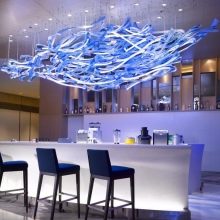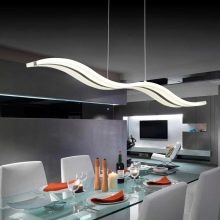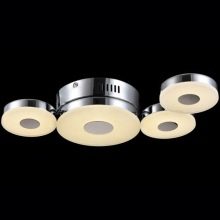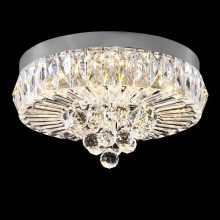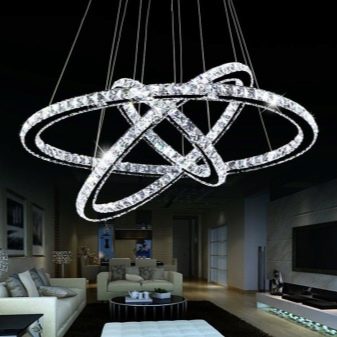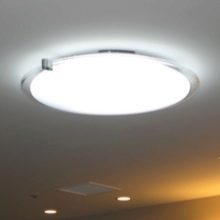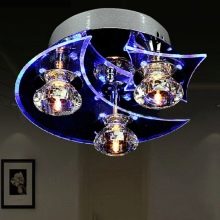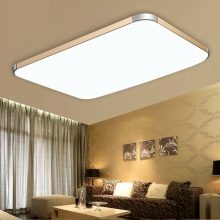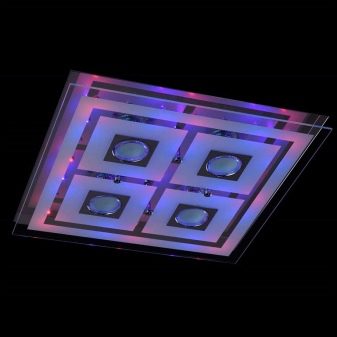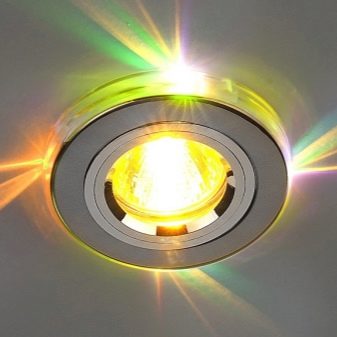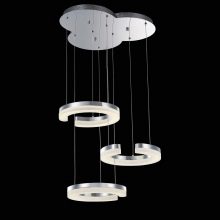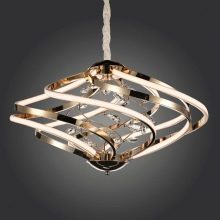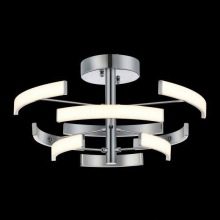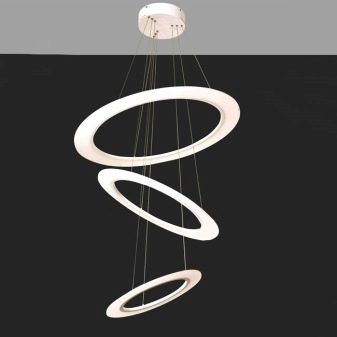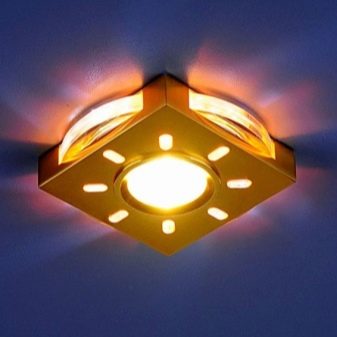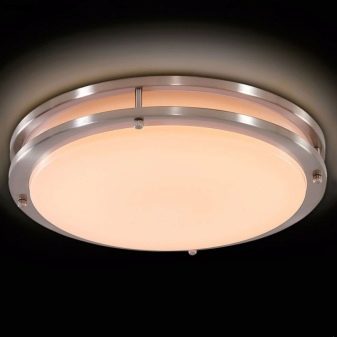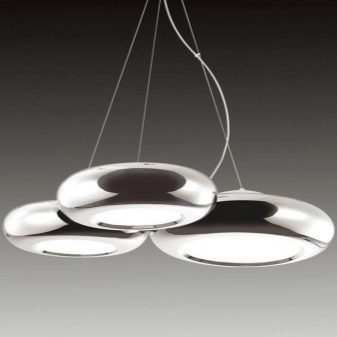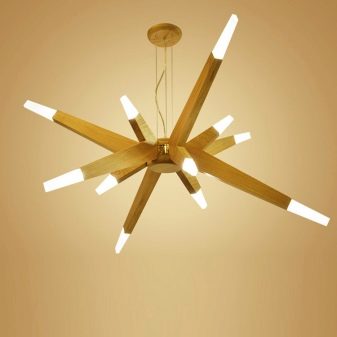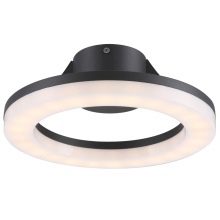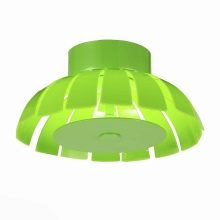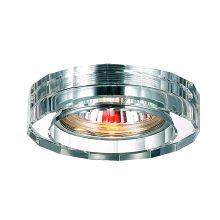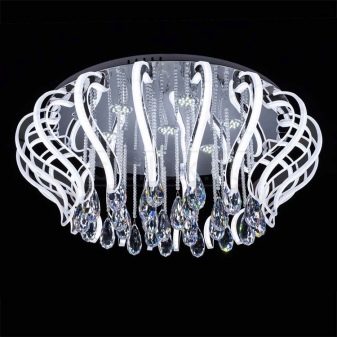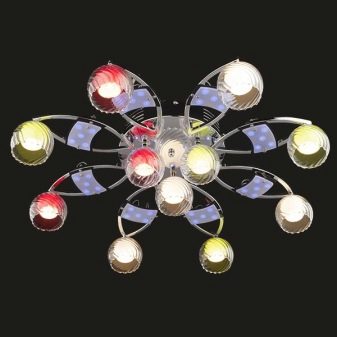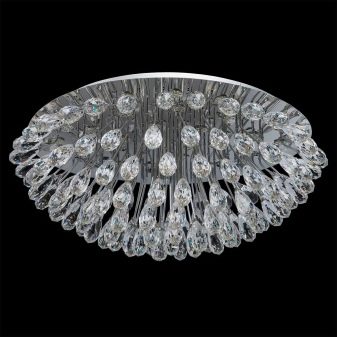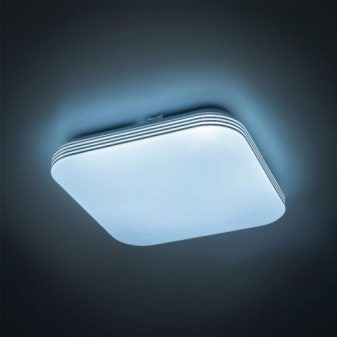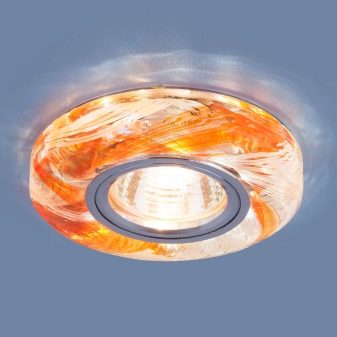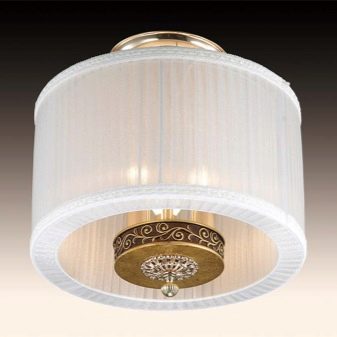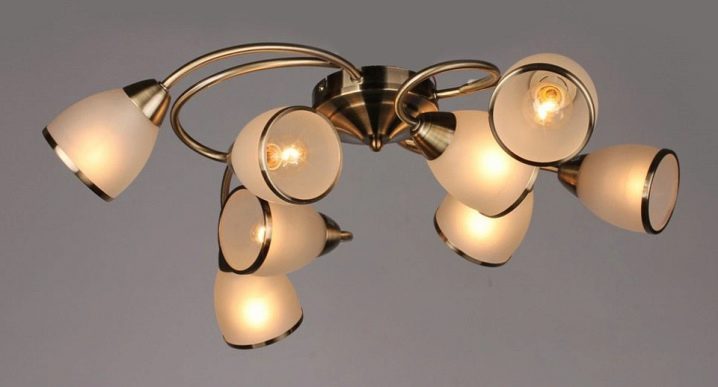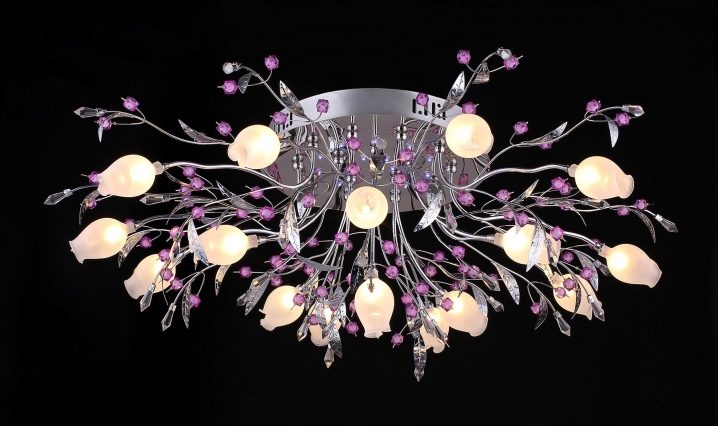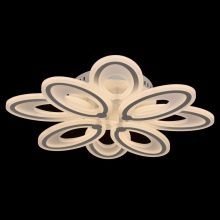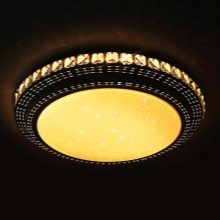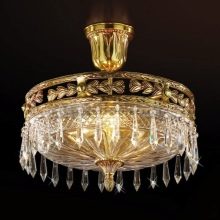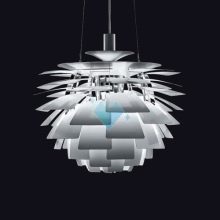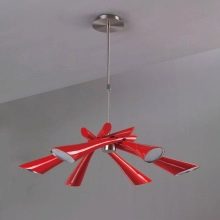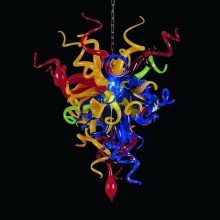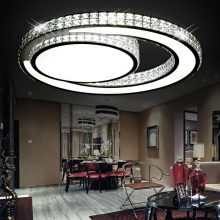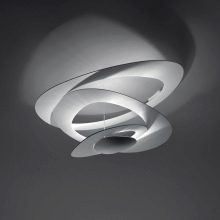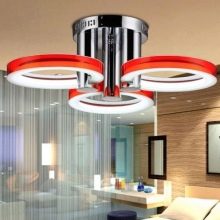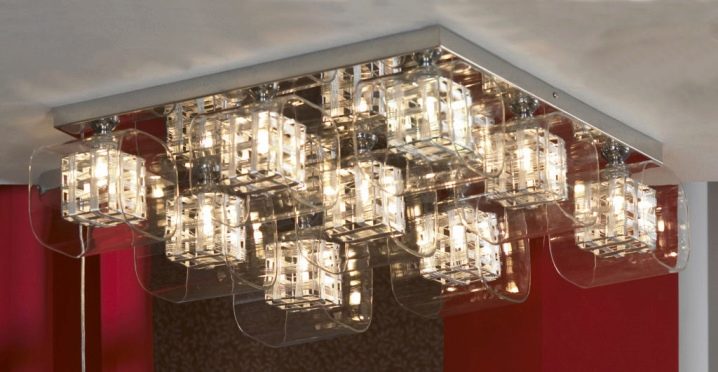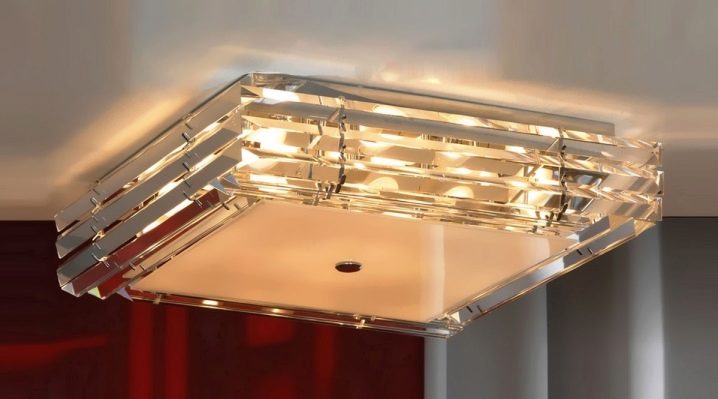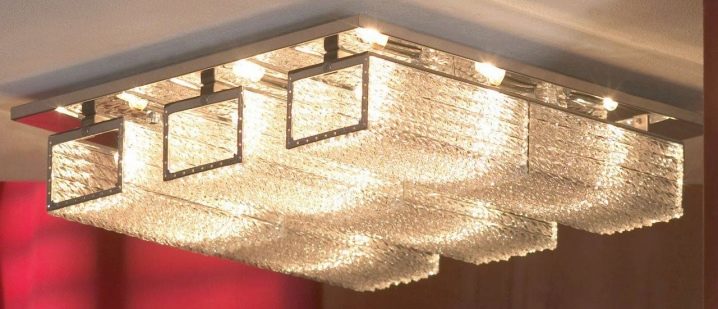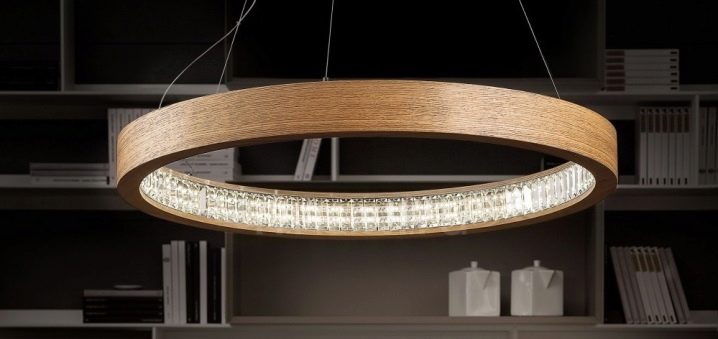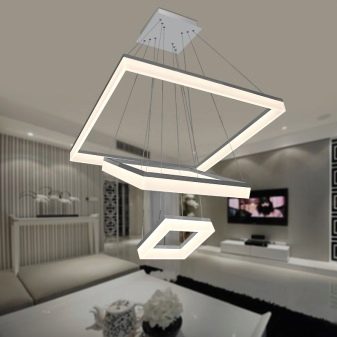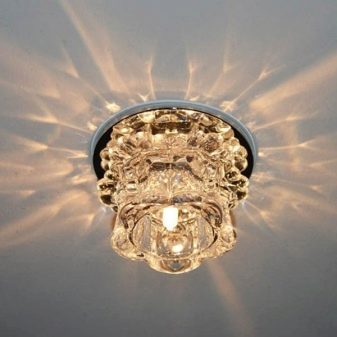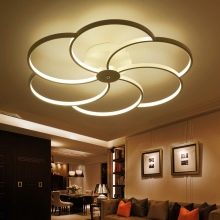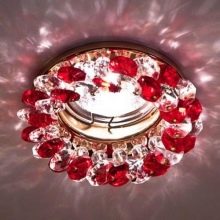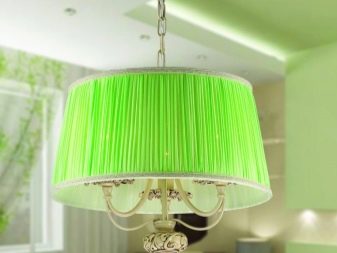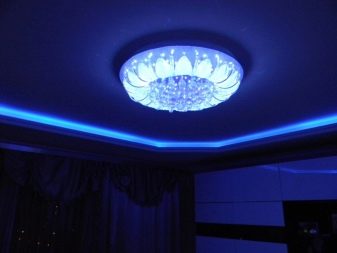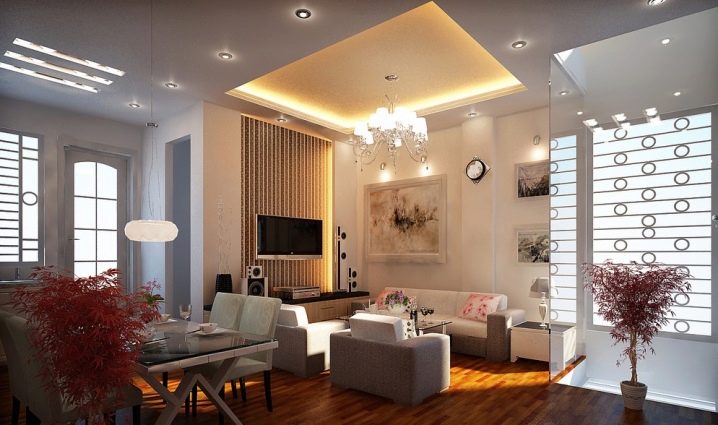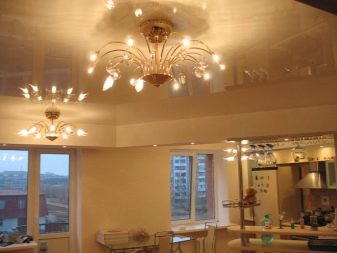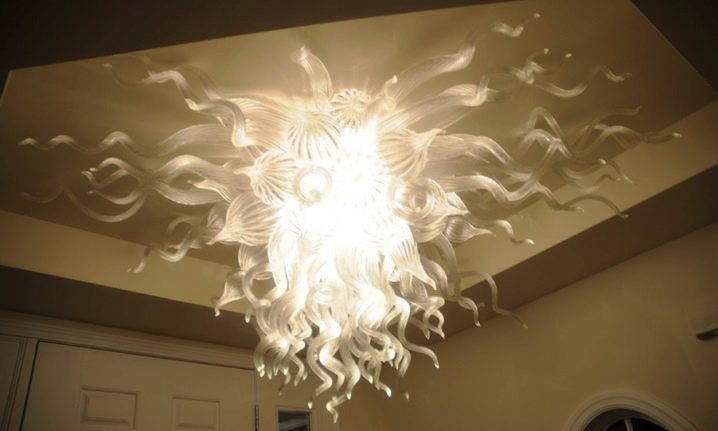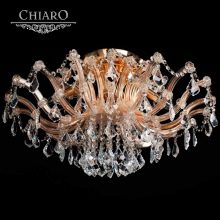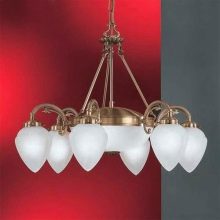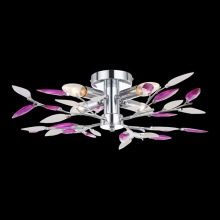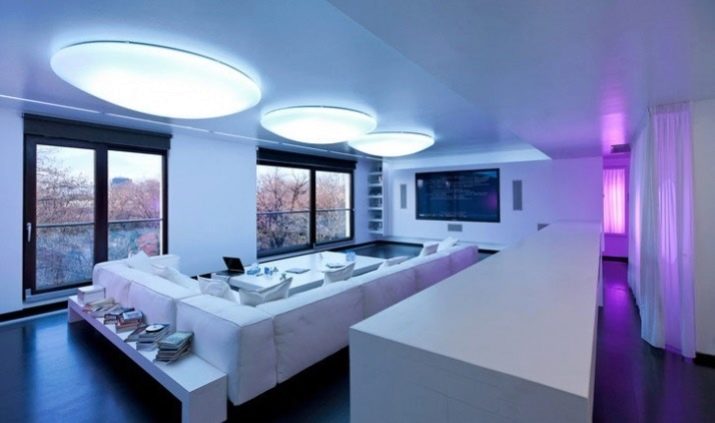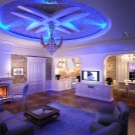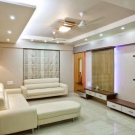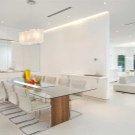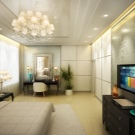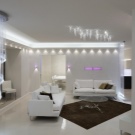LED chandeliers: types and features
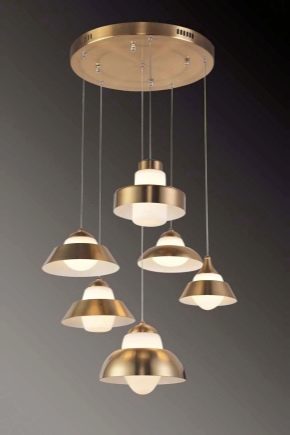
LED chandeliers are a unique interior solution. These models appeared on the luminaire market not so long ago, but they already managed to occupy a leading position in their segment, pushing aside the analogs with fluorescent and halogen lamps.
LED chandeliers are a key design element, have a lot of varieties and features.
Kinds
LED chandelier got its name from the type of light bulbs or semiconductor crystals that convert the consumed electricity into luminous flux. The ceiling lamp has a second name - LED-chandelier. The range of products is divided into two types:
- suspended;
- ceiling.
Each type of LED-lighting has its strengths and weaknesses. In the lines you can always choose the option with a long service life and good performance. To understand this, you need to know the main differences of each lighting device.
Suspended structures are chandeliers on chains or other suspensions that are attached to the ceiling by means of a hook. Outwardly, these are mostly massive and voluminous central lamps, which are more aimed at aesthetic perception. They are harmonious in spacious rooms with high walls, intended for hotels, restaurants, concert halls. In the lineup there are models adapted for residential premises (apartments, country houses, studio apartments). Their body is installed on a chain, cords, strings, and the height level is adjusted to the specific parameters of the walls.
Ceiling LED chandeliers of the near surface type are more accurate and do not have external bulkiness. They are fixed as close to the ceiling as possible, they are flat or voluminous, suitable for rooms with low or standard ceilings.Their distinctive feature from models with a suspension is the possibility of using two or three identical models on the ceiling of one room.
They do not have multi-tiered design compositions, as pendant counterparts, are more restrained in decorating and do not interrupt the general idea of interior design.
Advantages and disadvantages
LED lights have strengths and weaknesses. They can be expressed in appearance, forms, work process, features of the composition of the ceiling plate. Chandeliers are the main accents, therefore attract the main attention. Everything that complements them should not interrupt the central lighting, since their luminescence differs from analogues in the form of incandescent lamps and energy-saving light bulbs.
LED chandeliers are modern ceiling lamps of an unconventional plan, which surely come into use and have a lot of advantages. These interior accessories are appropriate in different rooms: bedroom, living room, kitchen, children's room, home library, study, spacious loggia. They:
- made on professional equipment using modern production technologieschecking quality and reliability at every stage, which allows models to comply with quality characteristics;
- are safe central lamps of the rooms, having the “correct” type of light sources that do not heat the ceiling or decorative elements of the structure;
- recognized as the best lighting accessories of all the rulers, since they shine with a uniform light without flickering, gently scattering the luminous flux around the room (they do not hit the eyes, therefore they do not harm the retina and optic nerve);
- only of all light sources have different temperature of the light flux, allowing you to fill the space of the room with light of warm and cold shades, if necessary, creating the desired atmosphere (for example, equated to daylight);
- depending on the model have additional functionality in the form of a control panel, through which you can turn the chandelier on or off without approaching the switch, and also change the level of light intensity at will;
- Some models have tilt adjustment luminaire at the request of the owner, which opens up a lot of possibilities for design when drawing up a special composition of lamps on the ceiling;
- differ in a wide model range, allowing each buyer to find the most harmonious option for their home, taking into account taste preferences and the budget planned for the purchase.
- no color palette restrictions, forms and décor, thanks to which they are able to successfully fit into any interior style, giving it a general idea or tying individual elements of the style together;
- almost always appropriately combined with spotlights, sconces, table and wall lamps, accents or LED strips, matching the shade of the light flux;
- differ in big service life, than any other analogs, and provide for the replacement of burnt out elements, which significantly prolongs the operation of products;
- differ in cost depending on the type of material used, its quantity and complexity of the design, so it is always possible to buy exactly what you can afford.
Lamp features
LEDs used in chandeliers have a number of advantages, among which the main ones are:
- energy savings (consume 3 times less energy than luminescent and 10 times less filament);
- fire safety (the body of the chandelier and light bulbs does not heat up even with long-term operation of the chandelier);
- environmental friendliness (in the process of working light bulbs in the air does not emit harmful substances: they are not);
- impact resistance, resistance to breakdowns and durability (one light bulb can work up to 10 years or more);
- little weight, conciseness and compactness of forms (lamps do not have twisted glass elements, which allows them to be located inside the lampshades, not speaking beyond their limits);
- resilience to multiple on and off;
- no need for eyes to get used to a particular shade of light flux.
Often, LED light sources have the support of three or more shades, which allows you to add the necessary notes to the interior, to give the atmosphere home comfort and harmony.
LED semiconductors turn on instantly in less than 1 second.
Minuses
Alas, with a lot of advantages, LED chandeliers have several drawbacks. These ceiling lights:
- have a limited illumination area, directing the luminous flux not in all corners of the room (they shine at a right angle);
- after several years of intensive work can reduce the level of light intensity;
- they do not always provide for the replacement of lamps, which is the reason for buying a new lamp (in models with built-in lamps);
- in successive designs, if one LED is burned out, the others are destroyed;
- not always sufficient to properly illuminate the space of the room, so they need additional lighting.
Since LED chandeliers are not able to give the proper level of illumination of the room, you have to buy powerful lamps, but they are expensive. If the model consists of a set of light bulbs, their replacement can cost more than the chandelier itself (one element of low power costs between 200 and 400 rubles). This is used by unscrupulous sellers and often under the guise of quality lamps they sell light sources with low indicators of quality and durability (these lamps burn out in a month or two).
Purchase should be based on the choice of high-quality luminaire and the corresponding lamps.
Models and designs
Ceiling diode chandeliers are multifaceted: the modern market of this product offers a lot of options, among which everyone will find an accessory with the necessary functionality. Depending on the functionality, the models are intended for:
- central lighting;
- selection of a specific area of the room;
- lighting (in the case of a combination of several chandeliers);
- create light effects;
- visual change of the space of the room;
- giving the room the right atmosphere.
Designs are large, medium parameters and compact. The variety of forms depends on the style and type of installation. By type of work, they are divided into classic and battery powered. The first models can be switched on in different ways, which allows varying the intensity of the room illumination. Varieties can have a fixed light or a special controlled system with a speaker. This technique gives a lot of opportunities for lighting on different occasions and mood.
The most original and popular models of LED chandeliers are lamps in the form of:
- LED strip;
- flat plates (pizza chandeliers);
- tablet chandeliers (pancake chandeliers);
- horoscope chandeliers;
- rectangular shape;
- graffiti;
- forms with multi-colored LEDs.
Models can be made in different themes, so it is not difficult to pick them up to the desired mood of the room.In the lines there are options that flicker, creating an amazing game of color. The design is simple or complex, in which the luminescence is given by lamps of a different type (for example, basic cylindrical shapes and decorative ones hidden under the figure pattern).
By design features of the model are:
- with rings (usually three rings);
- with column;
- with motion sensors;
- with LED matrices;
- overhead.
Materials
Raw materials for the production of LED chandeliers varied. The most popular materials used in the design of indoor ceiling lights include:
- metal;
- wood;
- plastic;
- plastic;
- glass;
- textile;
- crystal.
Production materials are divided into body and finishing. The first ones are the basis of the designs and ensure its reliability, the second ones are the decorative elements that adorn the form. As the case, trademarks use mainly metal and wood, although if the model is compact and has small built-in lights, plastic parts may be present in the case.
Often, materials are combined without breaking the condition: the heavier the chandelier, the stronger and more reliable the body.
A variety of finishing materials allows LED chandeliers to be different.The uniqueness of the designs is the fact that the finish can be harmoniously combined with each other. Each type of raw material is responsible for the texture, type of surface (can be matte, glossy, smooth, embossed) and the complexity of the style:
- LED crystal chandeliers they look gorgeous, due to different angles of light they can be poured with different colors of the color palette, they look noble and luxurious, but if there is a lot of crystal, the design increases in weight;
- plastic it is light, easy to clean, it is dull and transparent, allowing you to convey the beauty of color shades as smoothly as possible, however, it is often made with toxic additives, although it does not release them into the air (the lamps do not heat up);
- glass makes the chandelier heavier, so it is used infrequently, but due to its transparency, it does not reduce the intensity of light, like opaque materials;
- textile - a rare method of design of LED lamps: the use of fabric in the decoration of these chandeliers is the prerogative of creative workshops specializing in individual customer orders. Not every type of fabric is suitable for such models, it hides the light even in the case of thin fabrics with looseinterlacing threads.
Often, to create the desired color models, trademarks use special acrylic paints. The spectrum of the color palette of dyes is diverse, although more brands prefer metal, light and muted shades: it is easier to combine a lamp with a different design, and there will be more light in the room.
Styles
The style of chandeliers with LED lamps is not limited. If desired, and a masterful approach to the interior design of a particular room, you can fit lamps into any design idea. The main condition for success is that the model must have an appropriate shape or be connected with the general idea by means of decorative elements. LED chandeliers are relevant in the style of modern interiors of the classical, ethnic, modern and colonial style.
Most harmoniously they look in ideas:
- avant-garde - the style of innovation;
- Art Nouveau - chic sophistication;
- Baroque - chic and glitter;
- Bauhaus - functionality;
- bionics - the progress of technological advances;
- kitsch - combination of incompatible;
- constructivism - the union of glass and metal;
- modern - aesthetics of sensuality;
- Contemporary - the harmony of modernity and conservatism.
How to choose?
Choosing a new generation of LED chandeliers is not an easy and thorough task. The purchase process includes the selection of a model, the choice of a trusted store and a reliable manufacturer with a lot of positive customer reviews. An important factor is the style: the chandelier should look harmoniously with the furniture and tune in to the positive. Despite the fact that LED lamps are diverse, it is worth considering a number of nuances that simplify the purchase and allow you to purchase exactly what you need:
- models may have an uneven transition of waves of shades, if you need a certain light, you should stick to it;
- high-quality model is not cheap and is not sold on sales;
- a good product is always provided with certification and a passport indicating the installation features;
- for lighting, you should choose a model in which you can change the blown lamps, eliminating sequential work circuits;
- you should choose controlled or conventional models with powerful lamps and light shades that do not hide the intensity of the light flux;
- It is important to calculate the number of light bulbs, taking into account the correspondence of the number of light sources with the parameters of a specific room;
- The lighting of the chandelier with LEDs should more or less be suitable for the temperature of the lighting of the other rooms of the dwelling (or you can buy LED lights in other rooms);
- the product must be safe: sharp details of the decor and low location are excluded (the distance between the lower edge of the luminaire and the floor level should not be less than 210 cm);
- the model should correspond to the inner world of the owner (unusual and bright designer chandeliers, made by yourself or modern design versions, made according to an individual sketch are welcomed).
Features of operation
LED chandeliers are versatile and can be placed on the ceiling of any type. LED lamps stand out from other analogs in that they can be installed at any distance from the ceiling. In the process of work, they do not heat the ceiling covering, so they will not spoil it, even if they are in the form of a near-surface type and are installed on stretch ceilings. Since LEDs can change the perception of the interior and the mood of a person,It is important to buy them taking into account the "correct" temperature of light shade:
- dark yellow can make the mood sluggish;
- neutral white is more suitable for office, creates a working atmosphere, but tires eyes;
- the balance of yellow and white is similar to natural daylight, so it does not control the mood;
- red has anxiety and negative emotions;
- blue inhibits and with regular use provokes depression;
- green at first relaxes, but with constant use it damages the eyes;
- Blue brings freshness and pessimism into the room.
In order for the chandelier to be a functional, rather than a purely decorative element of the interior, it is worth noting a few nuances:
- model size interior lighting must comply with the parameters of a particular room;
- decor the luminaire should not strongly conceal the luminous flux (preferably translucent lampshades and decorative elements);
- considering the time of day it is important to provide a chandelier for the house or apartment with additional lighting (wall lamps, wall lamps and spotlights);
- in the hall it is better to buy two lampsBy arranging them symmetrically (one lamp will not be enough even for a small living room if the number of diodes is minimal);
- one chandelier is enough for the bedroom: the room is not intended for work, however the decor should not hide the lamps, otherwise there will be twilight in the room instead of the charming atmosphere.
You should not give in to the opinion that the more creative, the better: the models should be domestic, relevant in a particular dwelling. Unusual is welcome, but in moderation.
Eccentricity is good for creative studios.
Manufacturers and reviews
The release of LED chandeliers are engaged in many companies. The trademarks of Italy, Germany and China have achieved particular success in this. The products of German and Italian brands are distinguished by a high level of performance and special styling, aimed at the functional and extraordinary vision of style. The luminaires of Chinese manufacturers are notable for variability and various subjects. They can fit into almost any design, if you approach the interior design creatively and thoroughly.
The functionality matters: for someone it is important when the chandelier is equipped with sensors and it turns on itself, others adhere to more familiar ways of operating the ceiling lamp.It is extremely important for some buyers that the model is creative and bright, while others consider it important that the product should not interrupt the harmony of the available interior items. Among the variety of companies that deserve attention, one can mention the brands Globo, Elgo, Chiaro, Arte Lamp, Lussole.
In their lines there are overhead and suspension models, designed for a wide range of consumer interests.
Beautiful photos in the interior
LED chandeliers are beautiful interior accents. Practice shows that they look most harmonious in rooms that are not overloaded with an abundance of decor and furniture.
To learn how to install a LED chandelier with a remote control yourself, see the following video.
